How To Draw And Paint Hair In Oils
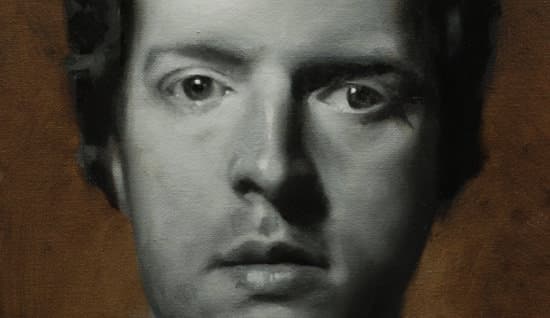
How to paint a portrait series. This is part 4 of a five part series of tutorials for beginners making the transition from drawing to oil painting.
Nosotros look at how importance value and tone are in creating a realistic black and white portrait using classical oil painting techniques.
Here is a quick review of what we have covered so far if you'd similar to join in…
Part 1 – Establishing the cartoon, including the shadow line.
Part 2 – Developing the tones, adding lights.
Part 3 – Modelling the large forms.
Part 4 – Second Painting
Mixing a new medium
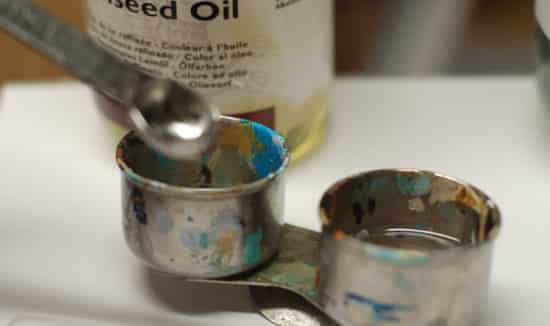
Nosotros now create a new medium for the adjacent layer of the painting. Different artists vary the richness of the medium depending on their own personal preference only the adjacent mix is still just using Linseed oil and Odourless Mineral spirits.
- 2 Part linseed oil to one Role Odourless mineral spirit (OMS)
You lot can use the pipette to measure out out amounts, or if I'g mixing a larger amount I'll use kitchen measurement spoons.
Pro tip: For this stage of the painting I sometimes use Damar varnish in the medium. Notwithstanding, to dilute the Damar varnish you ideally need to utilise turpentine which is better suited to a well ventilated separate studio space, rather than a ventilated room in a home. The OMS is not potent enough to dissolve the natural resins of Damar.
Choosing your groundwork
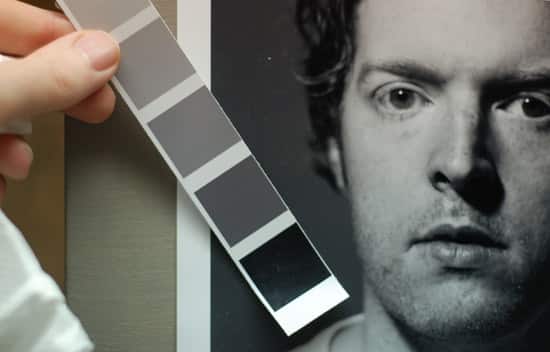
You can now assess your background tone to come across if you lot want to match a grey, rather than use the raw umber underpainting.
In this example, I've decided to leave the background as the Raw umber, because it is a slightly lighter in tone than the reference photograph I'thousand making my job a piddling scrap more difficult.
If this is your first portrait then I would definitely mix a greyness tone that matches your reference photograph for the background as it volition assist in judging the tones more than accurately and enable you to modify the drawing if it has gone 'out' at all. I am using leaving the raw umber every bit I like the aesthetic of the warm glow confronting the cooler blackness tones of the face.
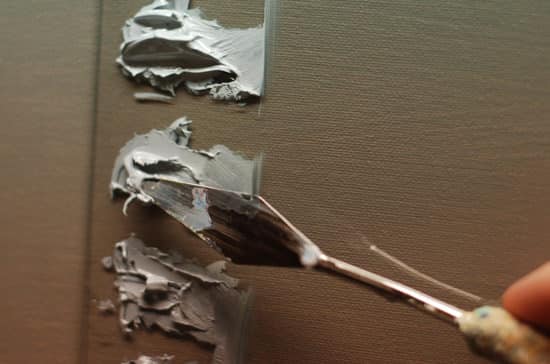
When yous come back to your premixed colour strings a couple of things would take happened, depending on the time between sessions. Either they would have formed a skin over the pinnacle or stale out.
How to keep your oil paint workable betwixt sessions?
If y'all have spent all your time mixing your color strings but take limited available time to paint how do you keep the pigment workable? There are a few options to minimise paint and mixing time waste material without the paint drying onto your palette.
- Freeze the paint. (in a resealable tub in the freezer)
- Submerge the paint underwater. (yous can use a shallow tray like a stay-wet palette, this only works if the palette or glass or perspex)
- Cover the paint with Plastic wrap/ cling film.
- Add a slow drying oil such equally oil of cloves. (Some painters warn this can lead to a darkening of the paint colour over fourth dimension)
- Mix a large hulk of paint, let information technology skin over and remove the pare and use the fresh pigment underneath.
So what'southward the all-time method? It's hard to give a straight answer as each has pros and cons.
My personal preference is to let the paint skin over, remove the pare, and employ the fresh paint from underneath and realistically you have well-nigh a 5 day working time until you need to mix it up from scratch once again.
The paint underneath the skin will be slightly stickier and thicker and as I progress the painting this extra thickness can be dainty to add more impasto passages.
Earlier nosotros brainstorm
I at present beginning to appraise the tones with fresh eyes. Having a suspension to refresh your eyes can be very of import with portraits. Frequently yous'll find yourself painting an area over and over again without really looking at it.
For this next part of the painting, nosotros are going to start to attempt and refine some of our shapes and develop the drawing.
This is the stage where things can go wrong and you tin can experience like there is no way back in your painting, all your hard work was for naught and a feeling of frustration can fix it.
This is normal, don't become disheartened.
Paintings oft go through a stage where they look really bad and this is ordinarily the phase where most beginners terminate. It can be all style of things that throw y'all off track, the cartoon can go 'out', the edges tin appear too difficult, you go over confident and don't observe tones likewise as you lot first started or you can become obsessed with just painting one part of the portrait – commonly the optics.
To make sure this happens equally little every bit possible, have regular breaks from the portrait, brand sure you lot step back to view your portrait from a distance and try and bring the whole painting together at the aforementioned time rather than focusing on the features- like shooting fish in a barrel to say but harder in practice and I still have to check myself when painting.
Assessing the tones
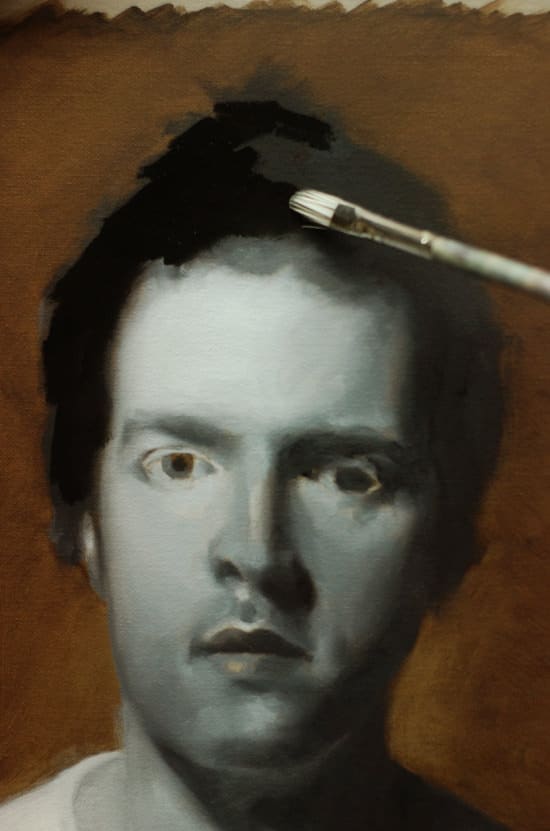
I now add together a flat tone of the blackness to the hair, it'southward quite thin however opaque as I'm going to be working wet into wet. This just establishes a layer of paint for me to work into.
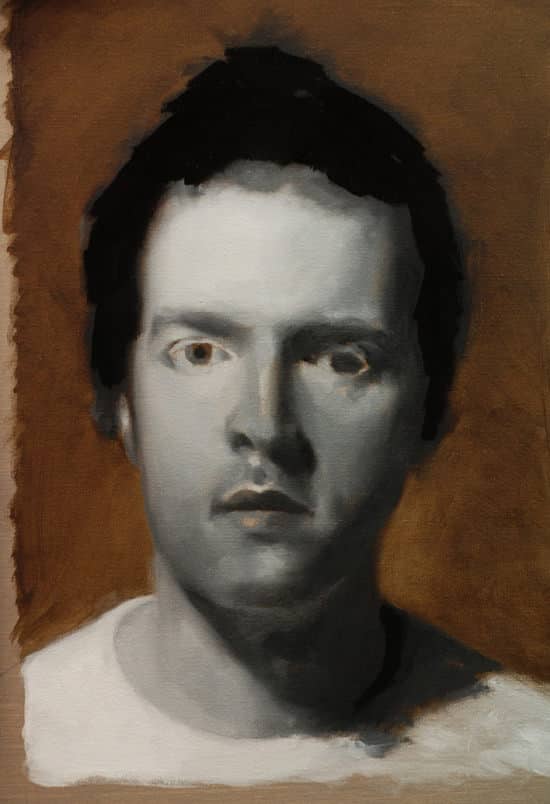
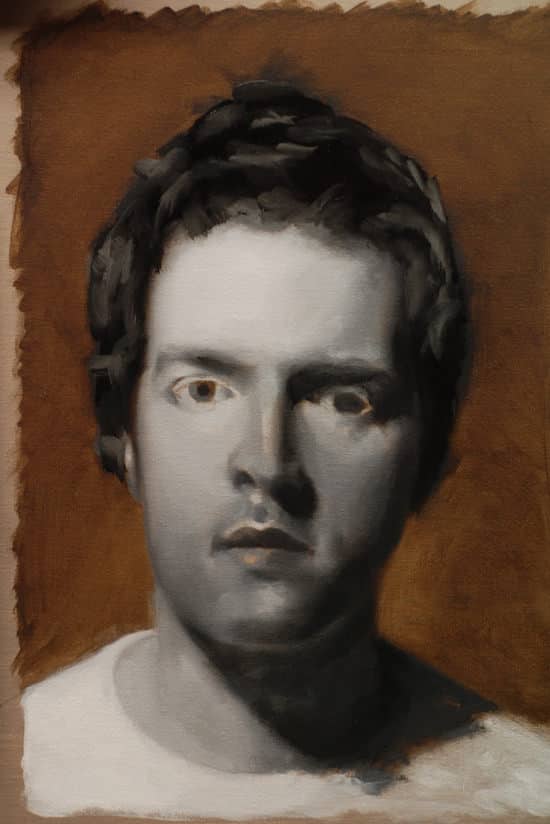
I've now added some gestural marks using the size four Ivory Filbert. I want it to be soft and quite loose – I'thou non trying to paint each individual hair I just want to create a general impression.
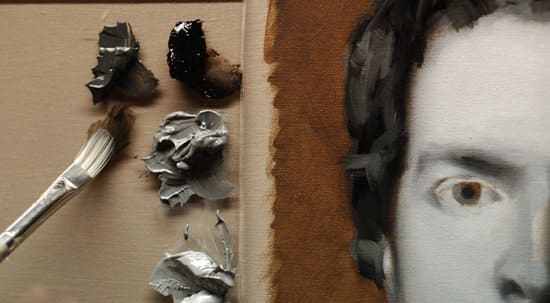 I and then work over the thicker, gestural highlights on the hair with a thinner mix of the black – just to soften any edges that stand out. Try half closing your eyes to try and keep the outcome simple.
I and then work over the thicker, gestural highlights on the hair with a thinner mix of the black – just to soften any edges that stand out. Try half closing your eyes to try and keep the outcome simple.
Reinforcing the Lights
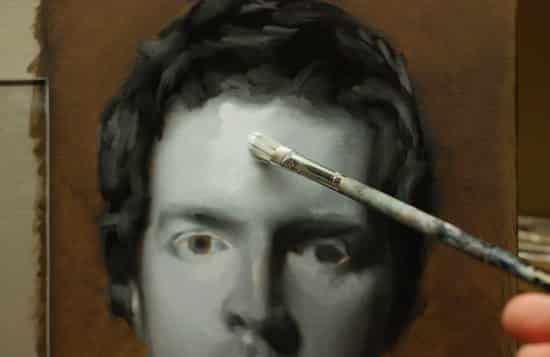
I now add some thicker lights using a value 2 and 3, flicking my eyes between the portrait and the photograph.
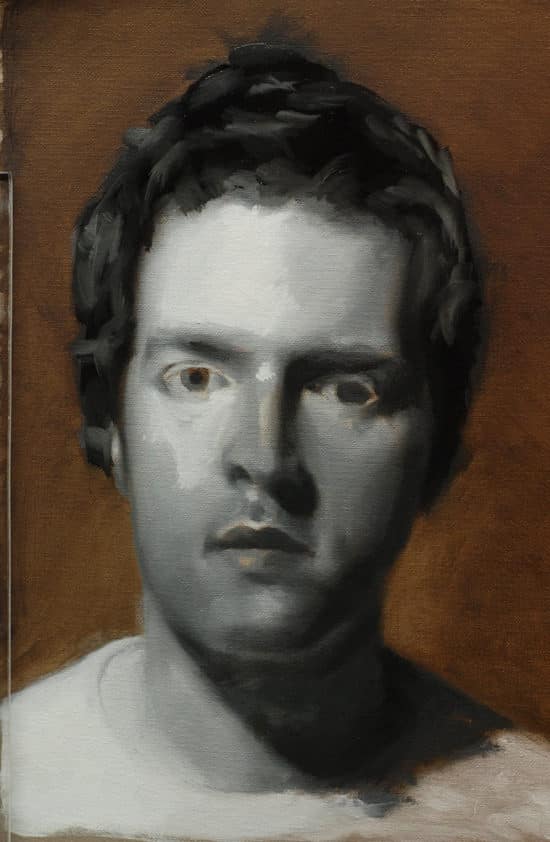
I continue to adjust the tones, working my style down the portrait as before. You'll discover how the pigment has a harder border because at that place isn't any of the wet paint underneath for it to blend into.
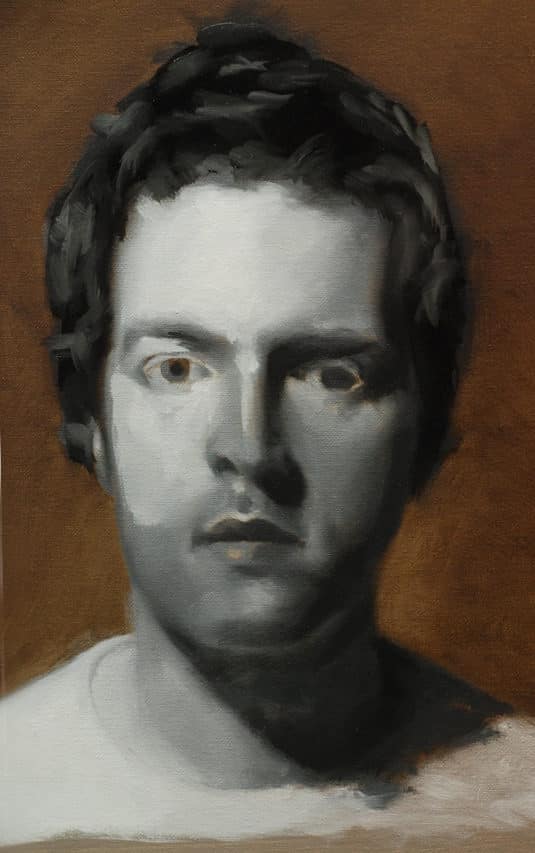
This is where you might first to get a flake scared, equally of a sudden we seem to be loosing the lovely soft finish of the first painting, so I switch to the softer sable to blend the pigment in more. I use a scrubbing movement with a dry brush to soften the transitions between the forms.
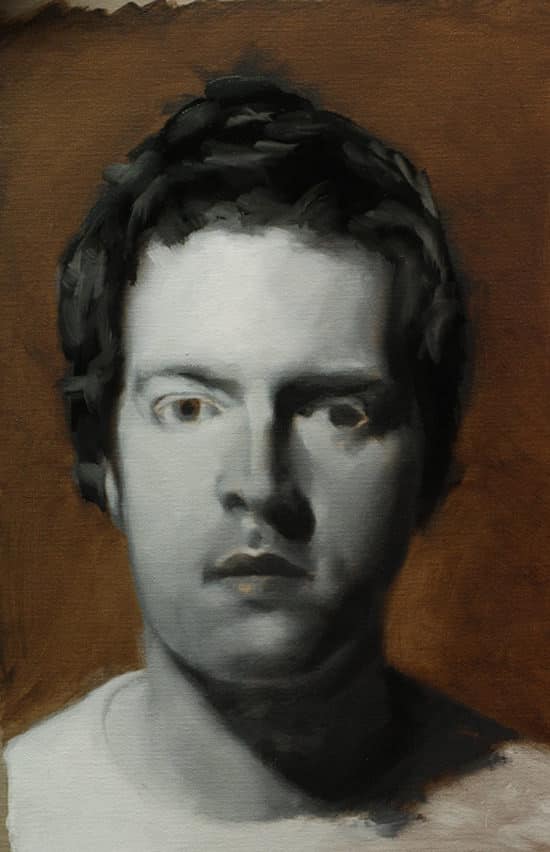
The fused edge now feels better, the temptation to get in and add some details to the eyes volition be strong. But nosotros are however trying to check the cartoon and alter whatsoever shapes. We are going from the full general to the specific. the smaller forms fitting into the bigger forms.
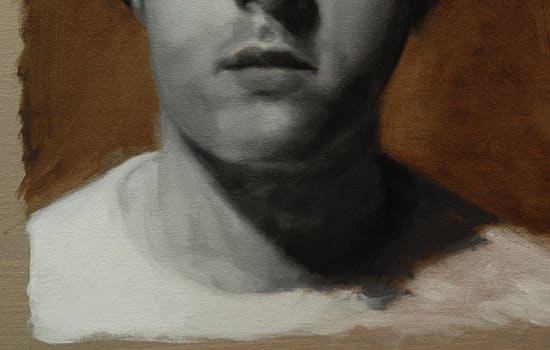
I add a few thicker brushstrokes onto the light side of the cervix, it'southward a adept tip to try to keep the lights thicker and the shadows thinner. Notice how the brushstrokes oasis't been blended at this stage, just apartment tones.

At present we can first to add some more item to the eyes, I use the smaller round sable brush. When the line first goes in it tin can look quite hard and 'cartoon similar.' I then use a soft dry out sable to soften the edges.
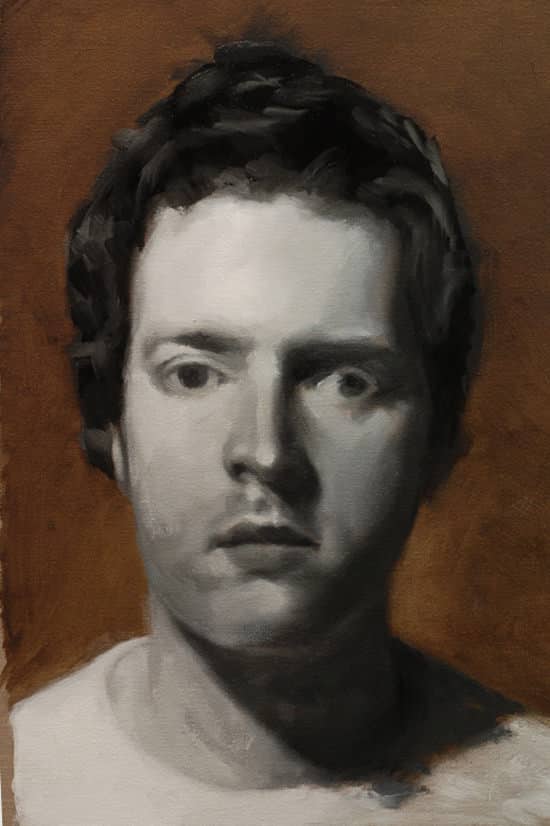
Notice how the eyes have a softer finish than the previous photo.
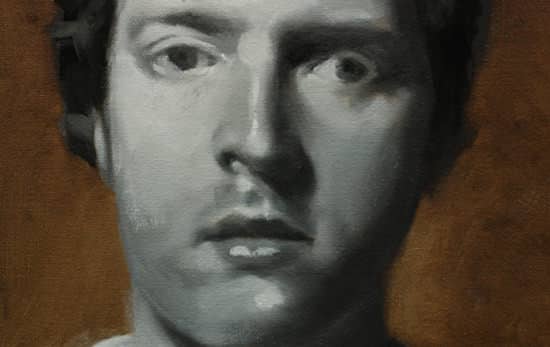
I so begin to add together further lights onto the portrait. These again can feel 'stuck on' as there isn't the wet paint underneath for the new light pigment to alloy into.
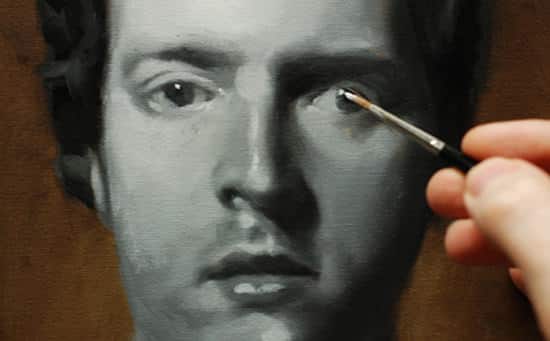
To assist guess the tones I at present add a pure titanium white highlight to the eyes, these are merely two dots of white. It's astonishing how much life these can bring into a portrait.
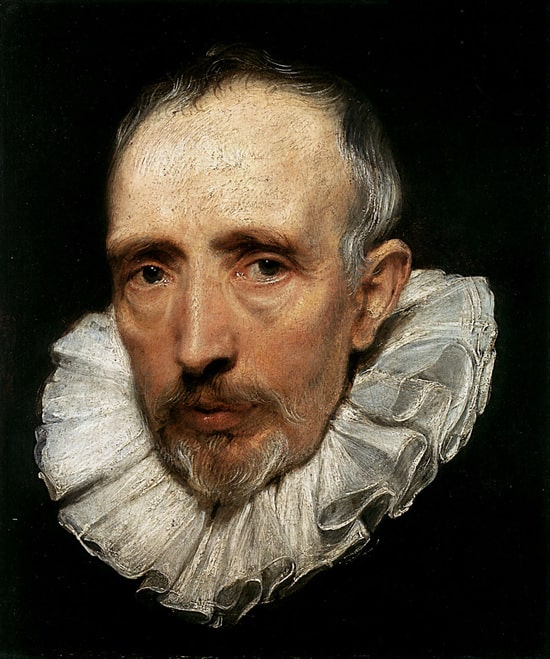
Anthony van Dyck, Portrait of Cornelis van der Geest, 1620
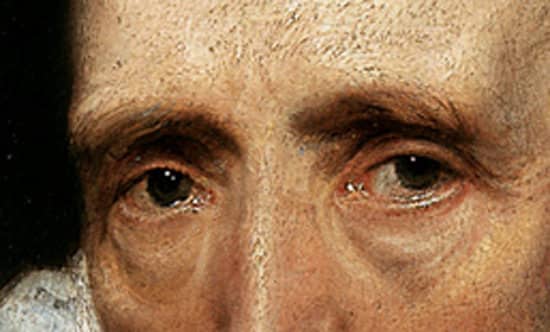
If nosotros await at the number of highlights in the eyes of van Dyck'due south portrait you lot tin see how effective they tin can exist in creating the illusion of realism in your portraits.
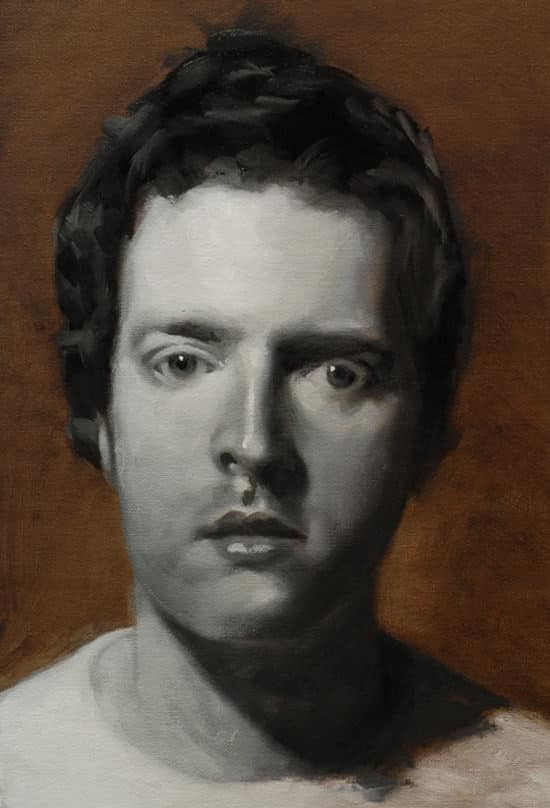
I now model the shape more using the smaller brushes, I might work between a size ii & size 4 of the Ivory filbert and the sable.
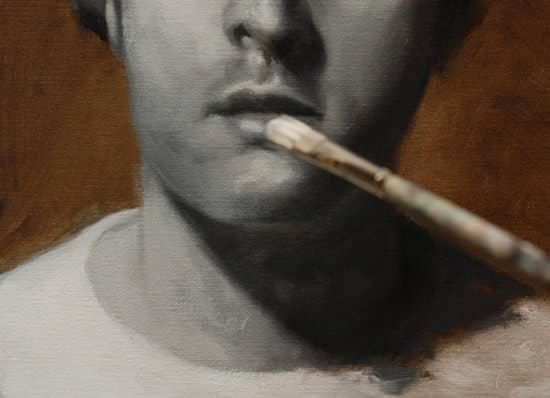
I then begin the soften the edges once again and make any adjustments in the drawing. At this stage, just a few millimetres of a line out can make a big difference. Often y'all are then shut to cracking the sitters character, then a brushstroke goes a little the wrong fashion and information technology takes to an hour to become back to where you were before.
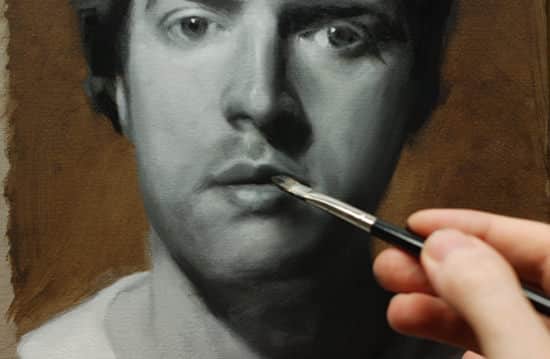
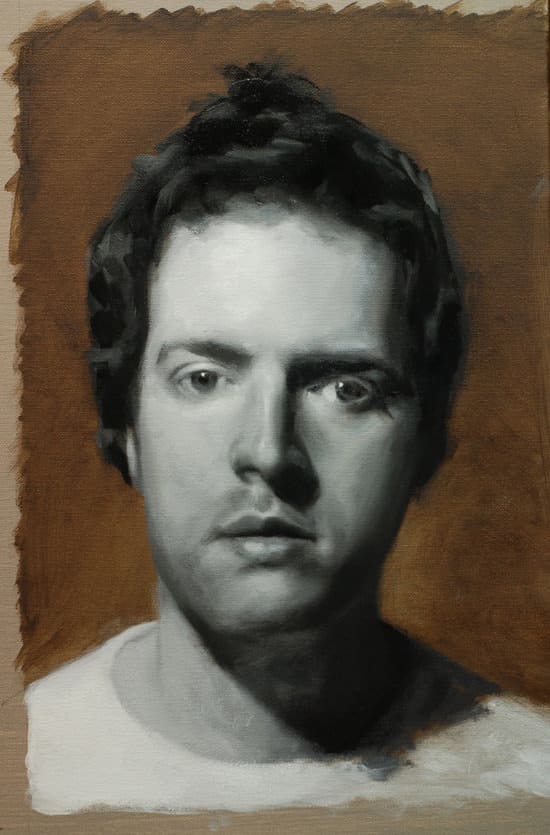
On this stage I've reworked the cheek that was in the shadow as it was making my face await too round, I've adjusted the cartoon and it seems to be working meliorate.
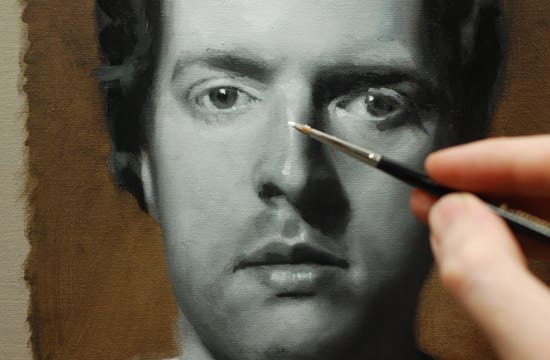
I now add some more highlights to the nose and the eyes.
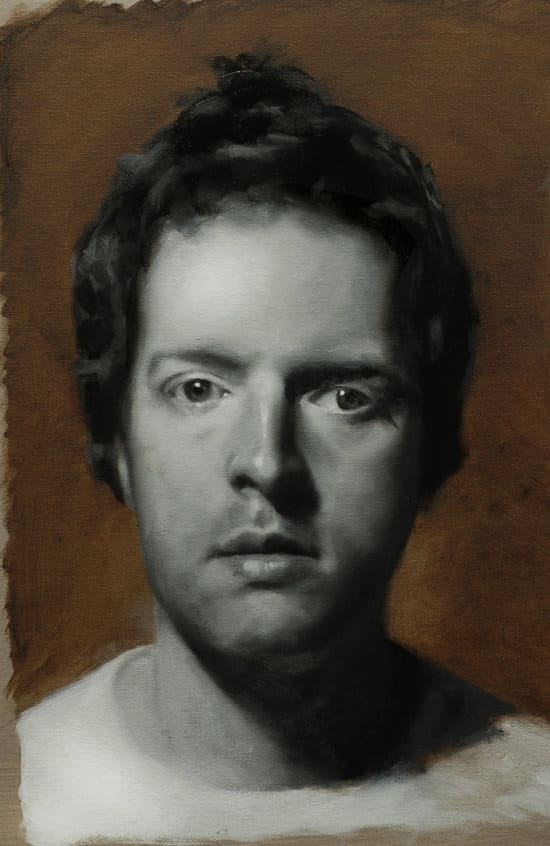
So now nosotros have the painting looking more like the sitter and the features with more than detail and course.
Tune in next week for stage v when we add the final glazing and finishing touches to the painting.
Happy painting!
Y'all might also like:
1.How to Pigment a Portrait in Oil – Part one
2.How to Pigment a Portrait in Oil – Role 2
3. How to Pigment a Portrait in Oil – Part 3
iv. How to Pigment a Portrait in Oil – Office v
Source: https://willkempartschool.com/how-to-paint-a-portrait-in-oil-part-4/
Posted by: weidmanatudeas.blogspot.com


0 Response to "How To Draw And Paint Hair In Oils"
Post a Comment